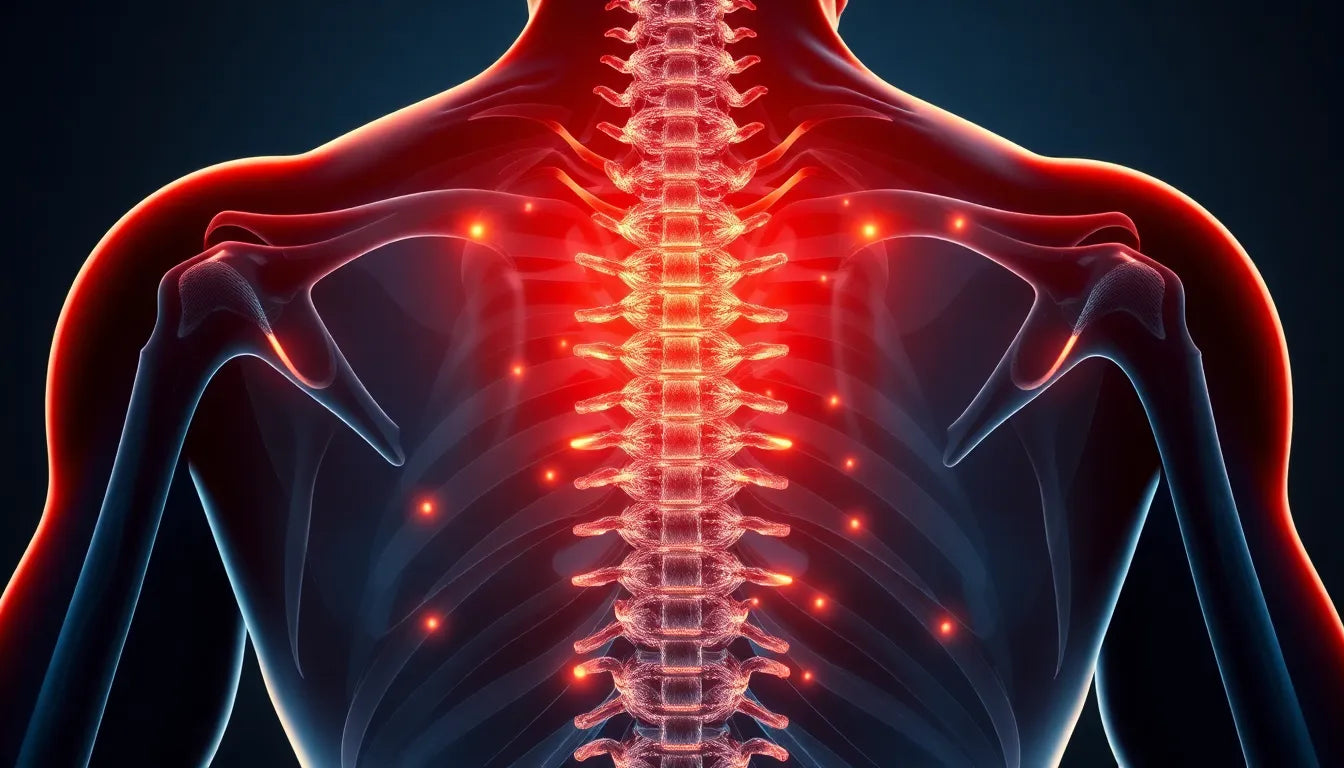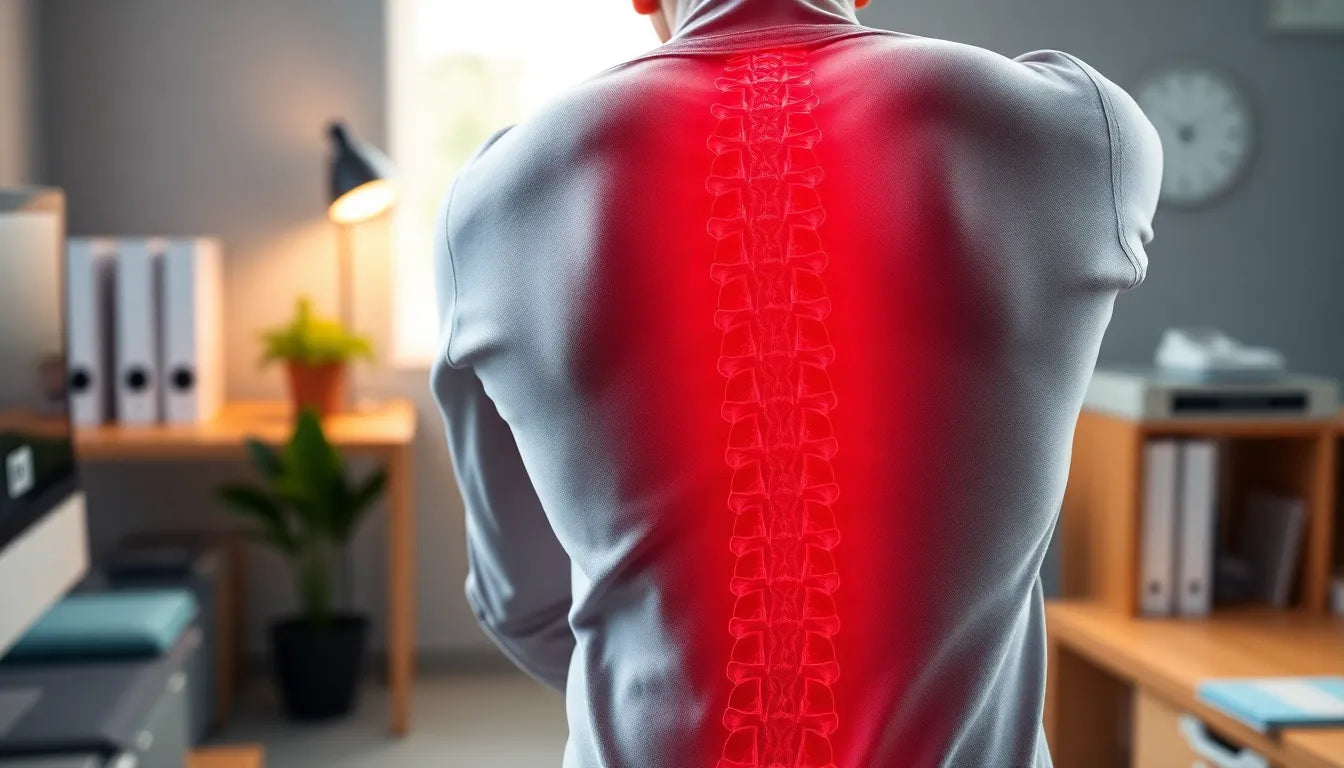Experiencing persistent back pain, numbness, or unexpected weakness in your limbs might be more than just a sign of fatigue or stress—it could be indicative of a herniated disc. This condition, often resulting from wear and tear or sudden injury, occurs when the soft center of a spinal disc pushes through a crack in the tougher exterior casing. While some individuals may experience no symptoms, others might find themselves grappling with significant discomfort that prompts them to seek medical intervention.
the importance of accurate diagnosis
A precise diagnosis of a herniated disc is crucial for effective treatment and management. Misdiagnosis can lead to ineffective treatment plans that not only fail to alleviate symptoms but may potentially worsen the condition. By accurately identifying the presence and severity of a herniated disc, healthcare professionals can tailor a treatment strategy that addresses the root cause of the symptoms, thereby enhancing the patient's quality of life. This underscores the importance of undergoing the right herniated disc test to ensure proper diagnosis and treatment.
overview of tests for herniated discs
To diagnose a herniated disc, healthcare providers employ a variety of tests, each designed to uncover different aspects of the condition. Initial assessments typically involve physical examination tests, such as the straight leg raise test, which helps identify nerve root irritation. These tests are often complemented by neurological evaluations that assess reflexes and muscle strength, providing insights into nerve involvement.
For a more comprehensive understanding, advanced diagnostic imaging techniques, like MRI scans, are utilized. MRIs are considered the gold standard for diagnosing herniated discs due to their ability to provide detailed images of soft tissues, including discs and nerves. In some cases, CT scans and myelograms may be used as alternatives or supplements to MRI, offering different perspectives on the spinal structure.
Nerve function testing, including electromyograms (EMG) and nerve conduction studies (NCS), further aid in assessing the extent of nerve damage and function. These tests are invaluable in forming a complete picture of the herniated disc’s impact on the body, guiding healthcare providers in crafting a comprehensive and effective treatment plan.
This exploration of the various tests available for diagnosing herniated discs sets the stage for a deeper dive into each method. Understanding these diagnostic tools not only empowers patients with knowledge but also prepares them for the journey towards recovery and improved well-being.
physical examination tests for herniated discs
When it comes to diagnosing a herniated disc, physical examination tests are often the first step. These tests are designed to identify signs of nerve root irritation and assess the overall impact on the patient's mobility and function. One of the most commonly performed tests is the straight leg raise test. During this procedure, the patient lies flat on their back while the healthcare provider gently lifts each leg. If lifting a leg causes pain that radiates down the back of the leg, it may indicate nerve irritation caused by a herniated disc. This test is particularly useful for identifying issues in the lower spine and serves as an initial screening tool for further diagnostic testing.
Another critical component of the physical examination is the neurological evaluation. This involves a series of tests to assess reflexes, muscle strength, and sensory response. By evaluating how well nerves are functioning, healthcare providers can determine the extent of nerve involvement and pinpoint the affected areas. For instance, diminished reflexes or muscle weakness can provide clues about which nerves are compressed by the herniated disc.
Additionally, observing a patient's gait and range of motion can reveal valuable information about their condition. Any abnormalities in walking patterns or restricted movement may suggest the presence of a herniated disc impacting the spinal nerves. These assessments help healthcare professionals understand the functional limitations caused by the disc herniation and guide them in developing a targeted treatment plan.
advanced diagnostic imaging for herniated discs
While physical examinations provide initial insights, advanced diagnostic imaging is often necessary to confirm a herniated disc diagnosis. MRI (Magnetic Resonance Imaging) stands out as the gold standard for this purpose. Unlike X-rays, which primarily show bones, MRIs offer detailed images of soft tissues, including spinal discs and nerves. During an MRI scan, patients lie still inside a large machine that uses magnetic fields and radio waves to create comprehensive images of the spine. This non-invasive procedure is invaluable for visualizing the exact location and severity of the herniation, allowing for precise diagnosis and treatment planning.
In some cases, healthcare providers may opt for CT scans or myelograms as alternative imaging options. CT scans provide cross-sectional images of the spine and are particularly useful for patients who cannot undergo an MRI due to medical reasons. Myelograms, on the other hand, involve injecting a contrast dye into the spinal canal to enhance X-ray images. This technique can help identify ruptured discs and other spinal abnormalities, offering another layer of diagnostic clarity.
nerve function testing for comprehensive diagnosis
To further assess the impact of a herniated disc on nerve function, healthcare providers may conduct electromyograms (EMG) and nerve conduction studies (NCS). These tests measure the electrical activity in muscles and nerves, helping to identify any damage or dysfunction. During an EMG, small electrodes are inserted into the muscle tissue to record electrical activity, which can indicate nerve compression or damage. NCS involves placing electrodes on the skin to measure how quickly electrical signals travel through the nerves. These tests are crucial for determining the extent of nerve involvement and guiding treatment decisions.
Understanding the array of tests available for diagnosing herniated discs empowers patients to actively participate in their healthcare journey. By recognizing the significance of each test, individuals can better prepare for consultations and make informed decisions about their treatment options. With accurate diagnosis and a comprehensive understanding of their condition, patients can embark on a path toward effective management and improved quality of life.
Patient experience and expectations
Embarking on the journey to diagnose a herniated disc involves a series of steps, each tailored to uncover specific insights about the condition. Initially, patients often engage in a consultation where they discuss their symptoms and medical history with a healthcare provider. This conversation sets the foundation for a targeted diagnostic approach, focusing on the most relevant tests based on the individual's symptoms and health status.
Following the initial consultation, patients typically undergo a series of physical examinations. These tests, such as the straight leg raise test and neurological evaluations, provide preliminary insights into nerve involvement and mobility issues. As patients progress through these assessments, healthcare providers maintain open communication, explaining the purpose of each test and what patients can expect.
When advanced diagnostic imaging is required, patients may be scheduled for an MRI, CT scan, or myelogram. During these procedures, healthcare providers ensure patient comfort and address any concerns, emphasizing a patient-centered approach. For instance, during an MRI, patients are informed about the process and encouraged to remain still to obtain clear images, while technicians offer support and reassurance.
Throughout the diagnostic journey, pain management is a crucial consideration. Ergonomic aids, such as supportive cushions or braces, can alleviate discomfort during testing and recovery phases. Healthcare providers may also suggest specific strategies to prepare for tests, such as wearing comfortable clothing and discussing any anxiety or pain concerns beforehand.
Frequently Asked Questions
What is the most accurate test for diagnosing a herniated disc?
MRI is the most accurate test due to its detailed imaging capabilities, allowing healthcare providers to visualize soft tissues, including discs and nerves, with precision.
How long do herniated disc tests take?
Physical exams are typically quick, often completed within 15-30 minutes. Imaging tests like MRI can take 30-60 minutes, depending on the area being scanned and the specific protocol used.
Are there any risks associated with herniated disc tests?
Most tests are safe and non-invasive. However, some procedures, like myelograms, involve minimal risks due to the use of contrast dye. Patients should discuss any concerns with their healthcare provider prior to testing.
Can I prepare for these tests in any way?
Yes, patients can prepare by wearing comfortable clothing and removing any metal objects for imaging tests. It is also helpful to discuss any concerns or questions with the healthcare provider to ensure a smooth testing experience.
Will these tests confirm if I need surgery?
While tests can indicate the severity of the herniation, the decision for surgery involves multiple factors, including the patient's symptoms, overall health, and response to non-surgical treatments. A comprehensive discussion with a healthcare provider is essential to determine the best course of action.
Sources
- NYU Langone Health. "Diagnosing Herniated Disc."
- Cleveland Clinic. "Herniated Disk (Slipped or Bulging Disk)."
- Spine-health.com. "Diagnosing a Lumbar Herniated Disc."
- Penn Medicine. "Herniated Disc Disorders."
- Weill Cornell Neurological Surgery. "Diagnosing and Treating a Herniated Disc."
- UCHealth. "Herniated Disks Diagnosis and Treatment."


















